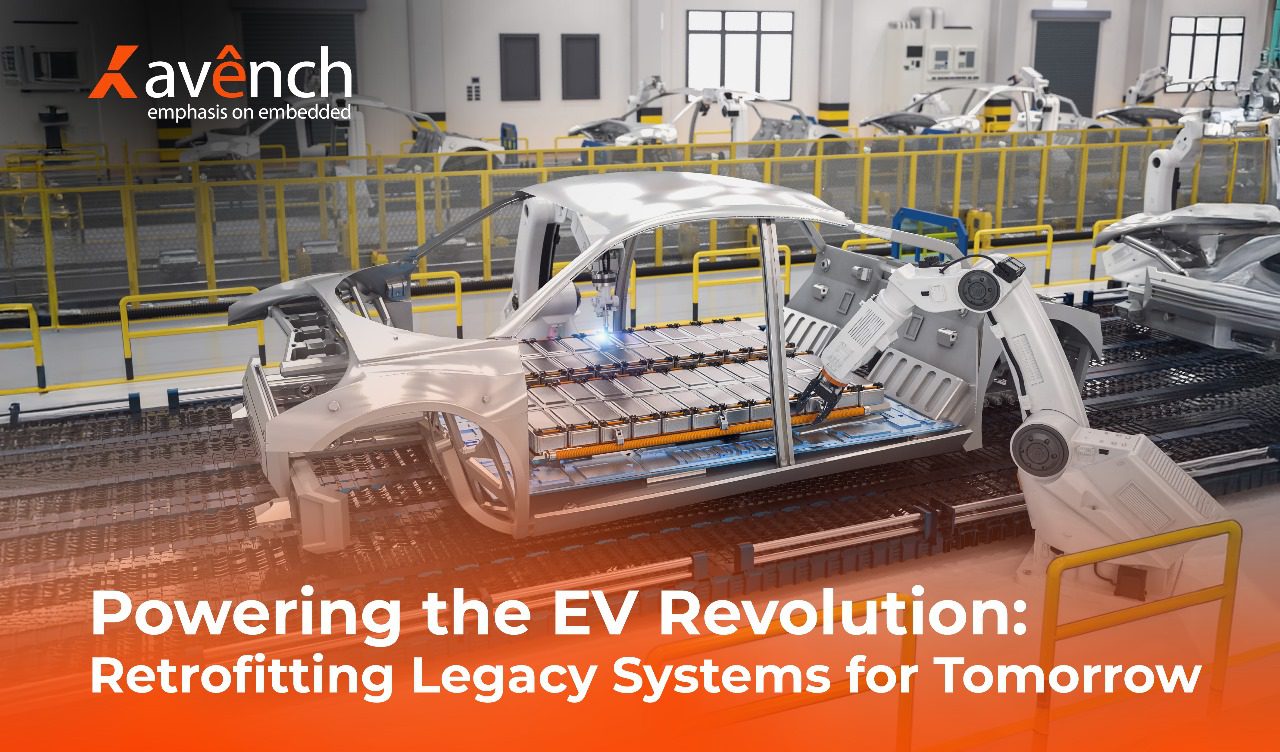Electric vehicles (EVs) are no longer a vision of the future, they are the defining force behind a global industrial transformation. As consumers, regulators, and manufacturers align around a decarbonized future, automakers and component manufacturers are under pressure to evolve at an unprecedented pace. But beneath the sleek lines of new EVs lies a much less glamorous challenge: the tangled web of legacy industrial systems that underpin the factories that build them.
In the push for EV dominance, it’s not always financially or logistically viable to build entirely new production ecosystems. That is where retrofitting enters the picture: a quiet, strategic revolution redefining how the automotive supply chain adapts to the demands of electrification. It’s efficient, sustainable, and if done right, deeply transformative.
The Legacy Problem in an Electrified World
Embedded controllers and edge intelligence solutions are quietly revolutionizing legacy factories, enabling real-time diagnostics, predictive maintenance, and secure remote updates
Most manufacturing systems running today were not built for EV components. Legacy Programmable Logic Controllers (PLCs), powertrain modules, or communication protocols were designed in an era of combustion engines, before regenerative braking, high-voltage battery packs, or intelligent torque systems became the norm.
In a traditional internal combustion engine (ICE) plant, delays in analog signal processing or minor protocol misalignment might cause tolerable inefficiencies. In an EV factory, the same delays can derail safety-critical systems.
- Older CAN networks struggle with high-speed data demands.
- Outdated controllers can’t respond within the sub-5ms windows needed for modern braking systems.
- Lack of cybersecurity safeguards leaves battery management units vulnerable to malicious interference.
The State of Retrofitting Today
The stakes are higher, and the margin for inefficiency is razor-thin.
Across Europe and North America, several major manufacturers have already begun large-scale retrofit programs in EV production lines:
- AGCO has retrofitted robotic sprayers with AI-based targeting, reducing pesticide use dramatically while improving yield.
- Jaguar Land Rover is integrating secure firmware and digital twins into older platforms to monitor drivetrain performance and emissions in real time.
- Independent firms like Fellten are converting vintage vehicles into EVs by pairing salvaged Tesla modules with newly engineered control units.
These aren’t fringe experiments, they are strategic pivots. They demonstrate the power of blending legacy robustness with modern agility.
Challenges That Still Hold Retrofitting Back
Despite the momentum, several hurdles stand between retrofitting and mainstream adoption:
- Interoperability headaches: Protocol fragmentation across Modbus, CAN, Profibus, and proprietary systems often requires expensive bridging solutions.
- Mechanical-electronic mismatch: Retrofitted sensors must be carefully tuned to avoid EMI interference or inconsistent readings.
- Security compliance: Older systems weren’t built for a connected world, making security retrofits complex and sometimes incomplete.
- Cultural resistance: Legacy systems often come with “tribal knowledge” baked into aging teams. Updating systems means redefining workflows, retraining staff, and often overcoming inertia.
Solving these pain points requires cross-disciplinary engineering, where hardware, firmware, cloud, and compliance teams don’t just collaborate, but co-design.
The Next 5-10 Years: Where Retrofitting Is Headed
Over the next decade, retrofitting will become not just viable but essential for electrified manufacturing ecosystems. We can expect:
Modular Retrofit Kits
Off-the-shelf retrofit modules will become increasingly available for standard legacy systems, cutting down design cycles and making upgrades scalable even for SMEs.
AI-Powered Optimization
With the growth of edge AI and digital twins, retrofitted systems will become self-optimizing, learning optimal energy curves, adjusting braking profiles, or predicting component fatigue before failure.
Secure-by-Design Architectures
Retrofits will embed secure bootloaders, TPM modules, and real-time anomaly detection as standard, not bolt-ons. Firmware integrity will become a basic expectation.
Circular Manufacturing Integration
Retrofitting will be central to sustainability strategies. As carbon tracing and battery passport regulations tighten, companies using reused platforms will benefit from credits, incentives, and reputational advantage.
Conclusion: Legacy Is Not the Enemy It’s the Launchpad
In the age of EVs, it’s tempting to think that progress lies in discarding the past. But with the right engineering rigor and vision, legacy systems can become the backbone of a modern, intelligent, and sustainable manufacturing ecosystem.
Retrofitting isn’t just a means of catching up. It’s a strategy to leap ahead, with less waste, greater resilience, and faster market adaptation.
Because in the race to electrify, the winners won’t just be the fastest, they will be the smartest about what they choose to upgrade.
In the electrified manufacturing era, legacy systems aren’t obstacles. It’s the opportunities waiting to be unlocked. Is your production line ready to adapt?
Avench is one of the leading embedded systems development in usa to know more information for any sales queries, wait for no further contact us at +1 (775) 404-5757. You can also email us at sales@avench.com, or fill the query form in a website.

